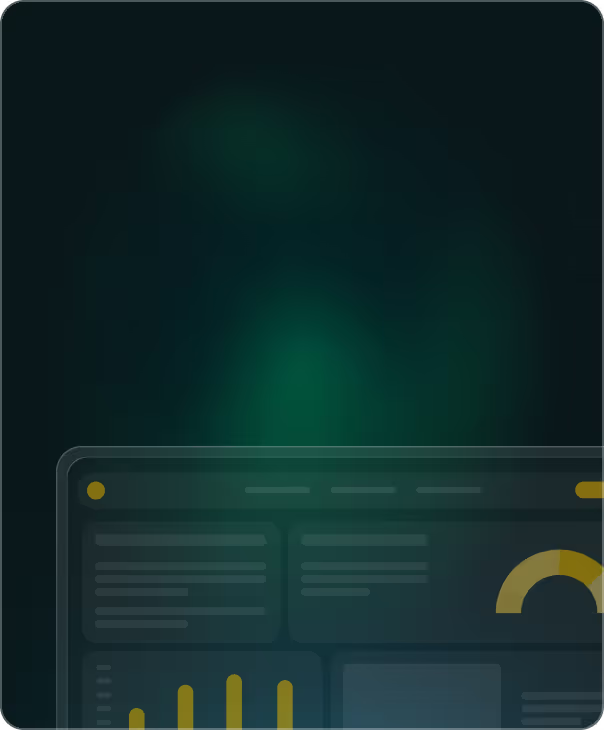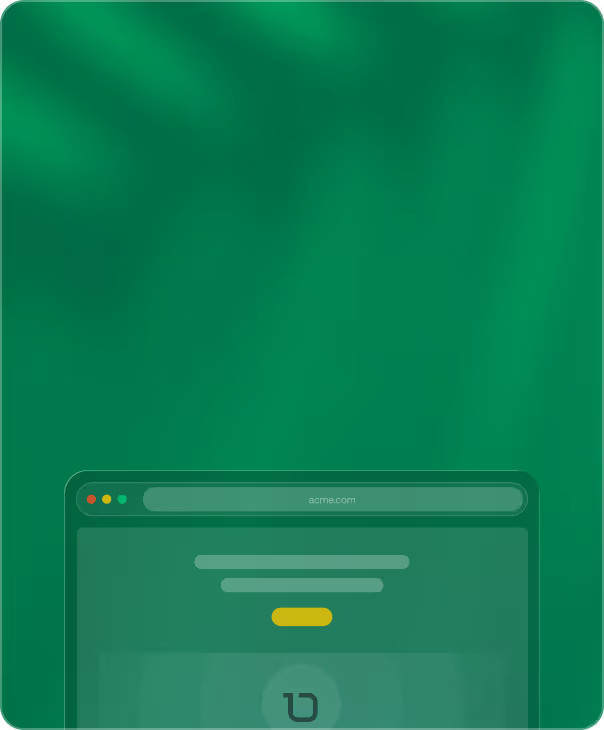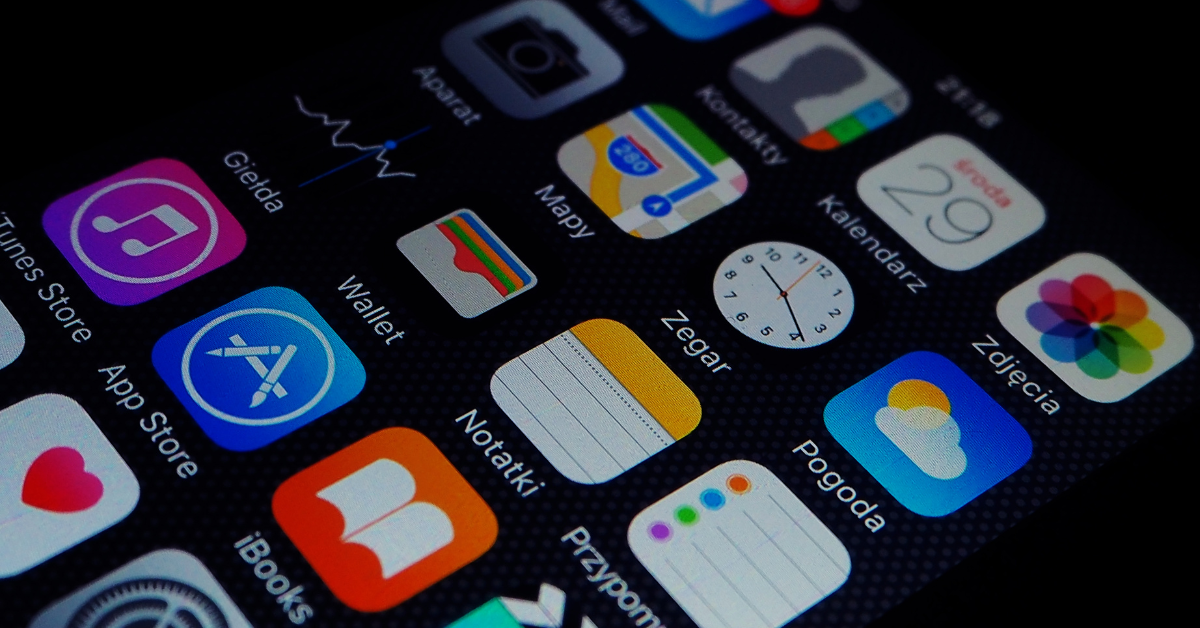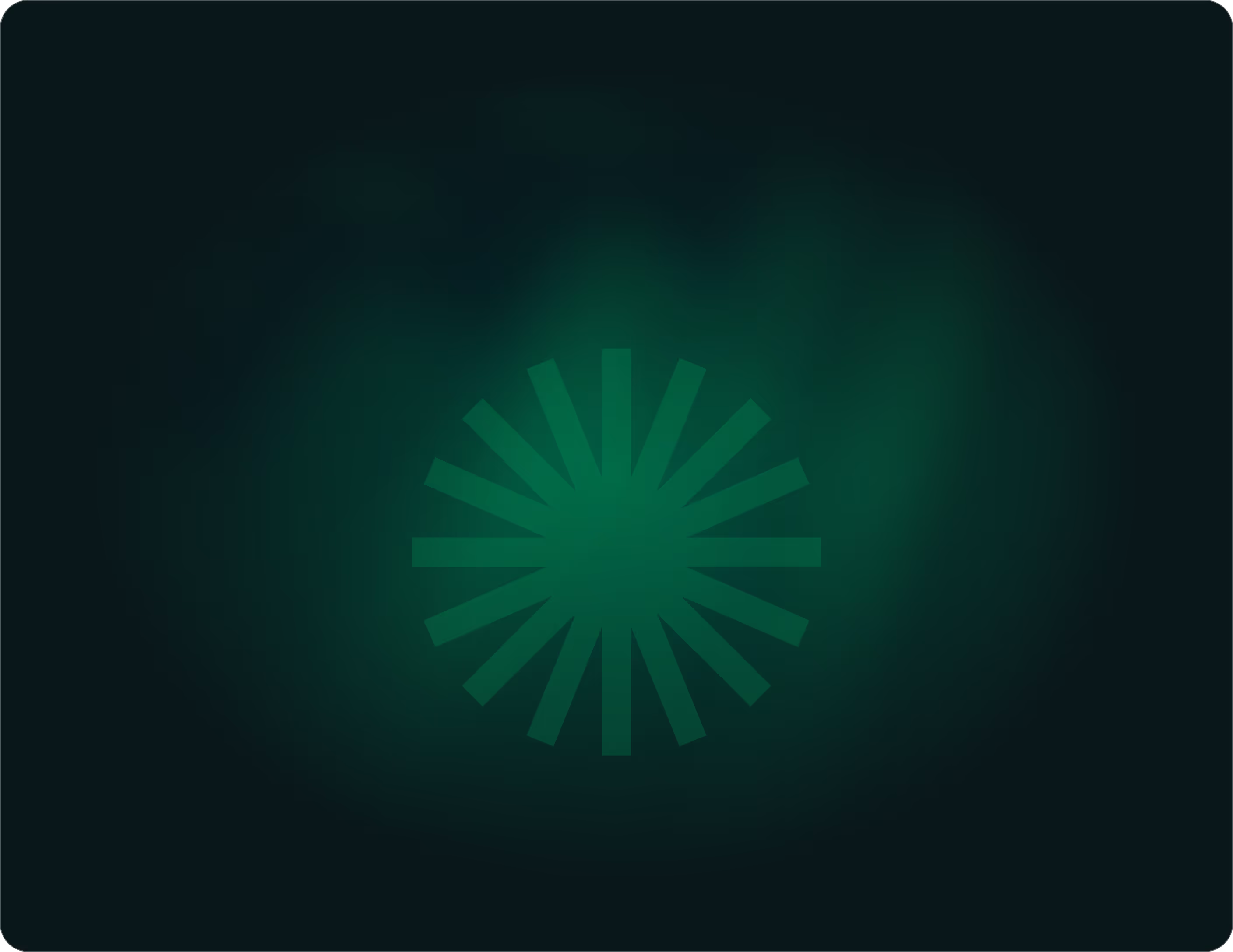Product design subscription for SaaS businesses
How Dark UX Patterns Are Costing Travelers More Than They Realize
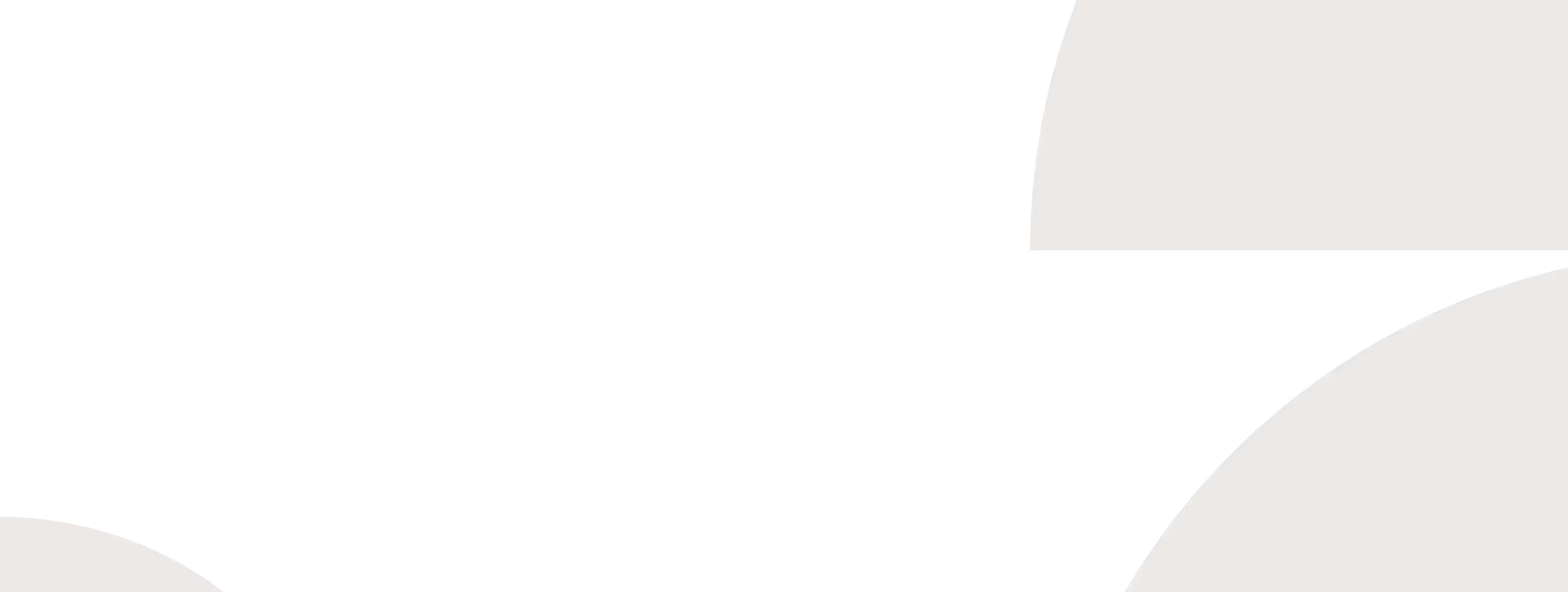
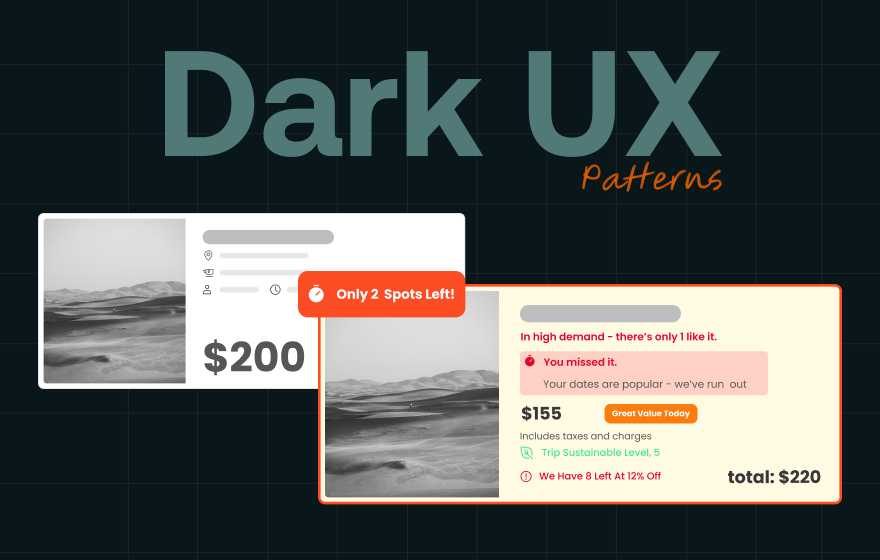
Airlines are using deceptive design tactics called "dark patterns" to manipulate customers into paying significantly more for flights. Our analysis reveals that these psychological tricks cause travelers to pay 108% more than the advertised base fare on average.
These manipulation techniques include artificial scarcity warnings, pre-selected expensive add-ons, and hidden fees that only appear at checkout.
Despite regulatory attention, these practices remain widespread across major airlines. Understanding these tactics and how to counter them can help travelers avoid unnecessary costs and make informed booking decisions.
The Top 7 Airline Dark Patterns (with Examples)
Through our investigation of booking processes across major airlines in five regions, we identified seven primary dark patterns that consistently appear during flight reservations.
These tactics range from subtle nudges that influence seat selection to aggressive time-pressure techniques that rush customers through checkout.
Each pattern targets specific stages of the booking process, from initial search results to final payment confirmation.
False Scarcity

Airlines display "Only 2 seats left" or similar warnings next to higher-priced fare options to create artificial urgency. This classic pressure tactic makes you think the deal will disappear if you don't book immediately, pushing you toward more expensive options without giving you time to shop around.
The reality?
Airlines typically have far more seats available than these warnings suggest. It's a psychological trick designed to trigger your fear of missing out and rush you into making a quick decision rather than comparing prices or considering if you actually need that premium fare.
Artificial Urgency

Airlines often display ticking countdown timers claiming you only have minutes to "guarantee your fare" or secure your booking. These timers create fake urgency, making you feel like prices will jump or availability will disappear if you don't complete your purchase immediately.
The truth is that flight prices are typically held for much longer than these timers suggest, and in many cases, the same fares remain available even after the countdown expires.
Social Proof Manipulation

Booking sites frequently display messages like "161 people currently looking" at the same flight to make you think you're in competition with other travelers. This social pressure tactic suggests that if you don't book quickly, someone else will snag your seat.
However, these numbers are often inflated, randomly generated, or completely fabricated. The goal is to trigger your competitive instincts and make you feel like you need to act fast to beat the crowd.
Aggressive Upselling Pop-ups
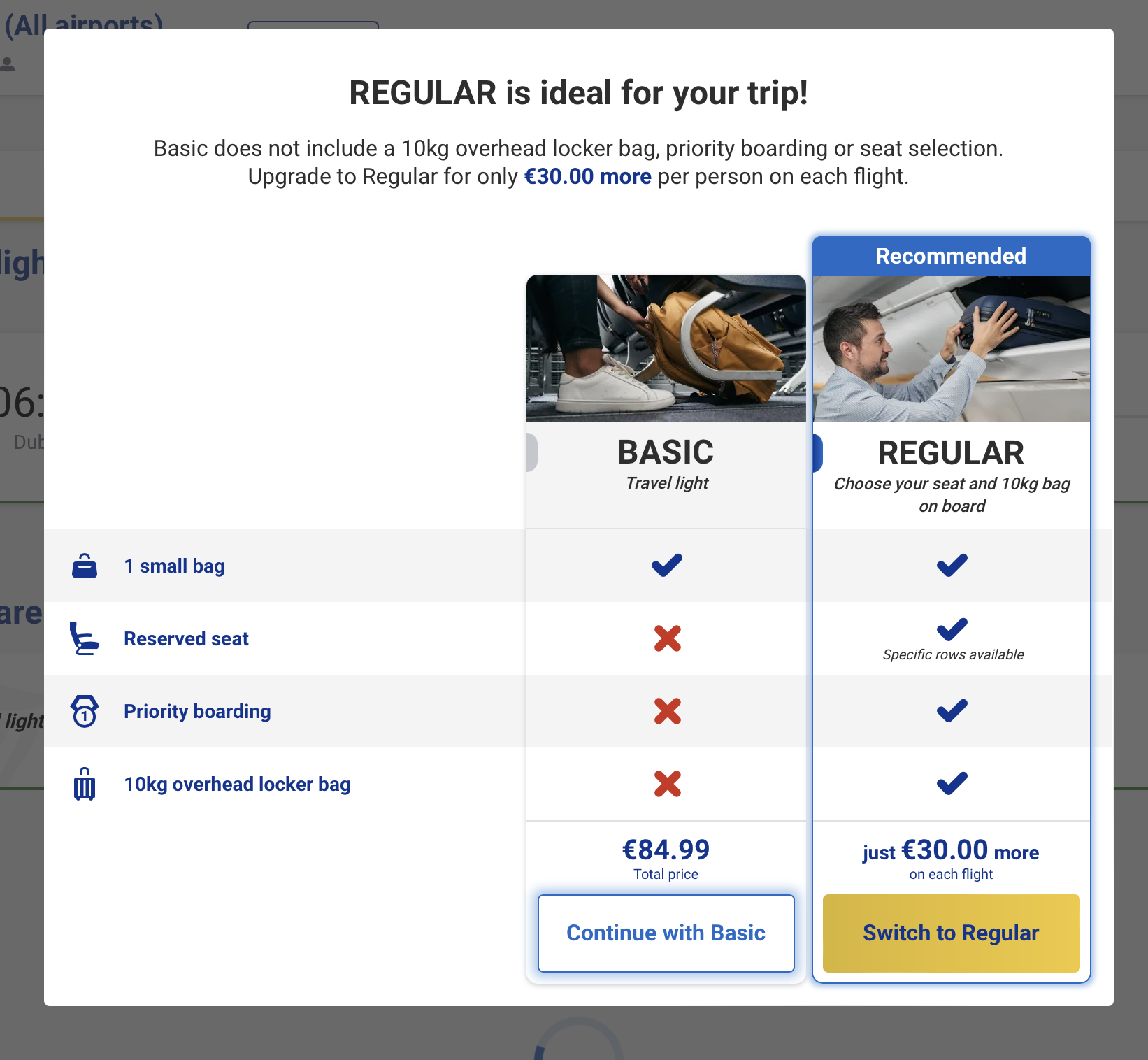
Airlines interrupt your booking flow with full-screen prompts that aggressively push upgrades by making your original choice look inadequate. These pop-ups highlight everything you'll "miss out on" with the basic fare using red X's and negative language, while making the upgrade option look appealing with bright colors, checkmarks, and "Recommended" labels.
The upgrade button is typically designed to be more prominent and eye-catching than the option to continue with your original selection. It's a classic manipulation tactic that makes you second-guess your choice and feel like you're settling for something inferior, even when the basic option might be perfectly suitable for your needs.
Bait-and-Switch Pricing
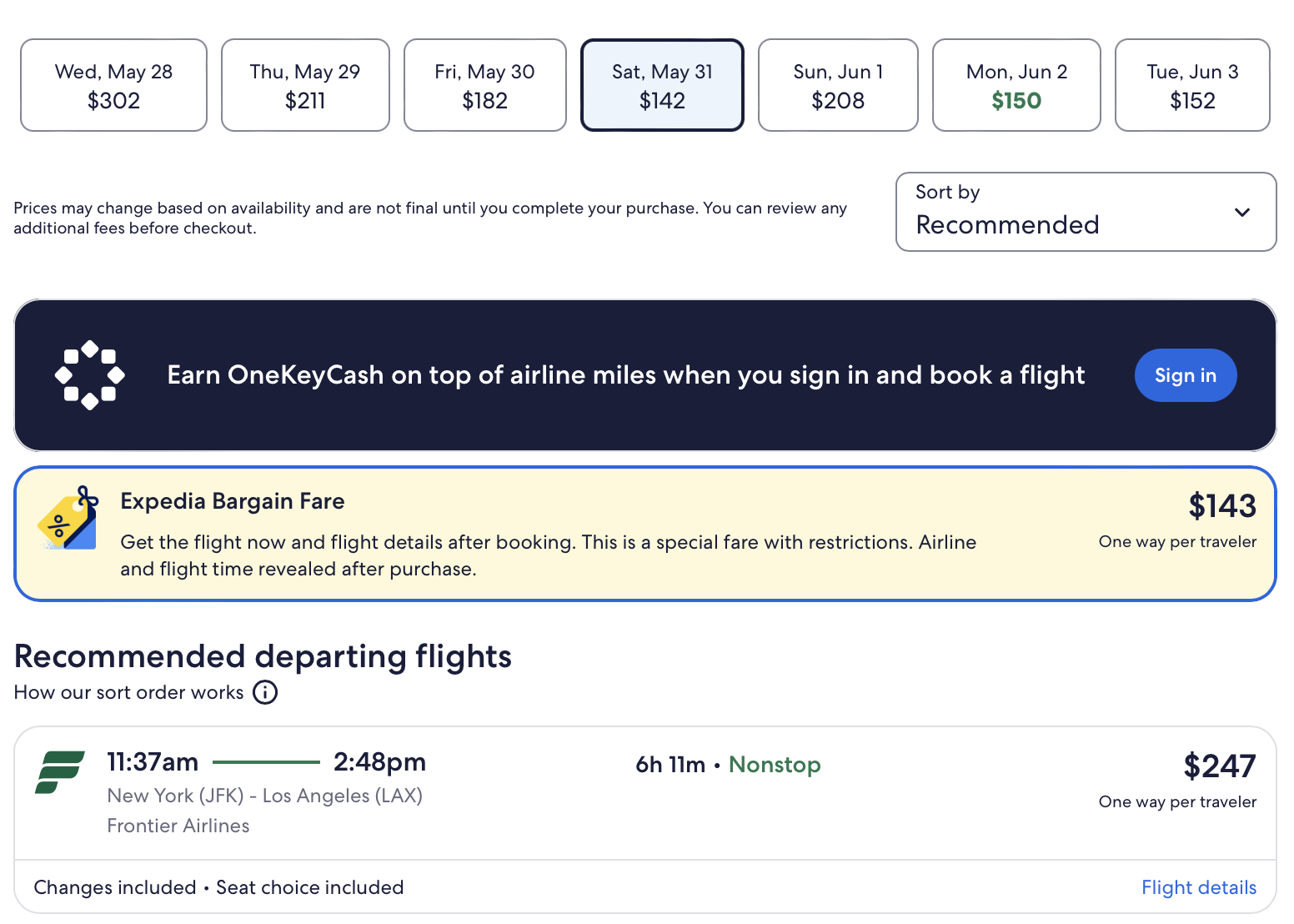
Some booking sites display attractive "Bargain Fare" prices without revealing crucial details like which airline you'll actually fly with, specific flight times, or restrictive conditions until after you've completed payment.
You're essentially buying a mystery ticket - you see the low price and assume it's a great deal, but only discover the catch after you've handed over your credit card details. By then, you might find yourself stuck with an inconvenient schedule, a budget airline with poor service, or hidden restrictions that make the "bargain" far less appealing.
FUD Warnings (Fear, Uncertainty, Doubt)
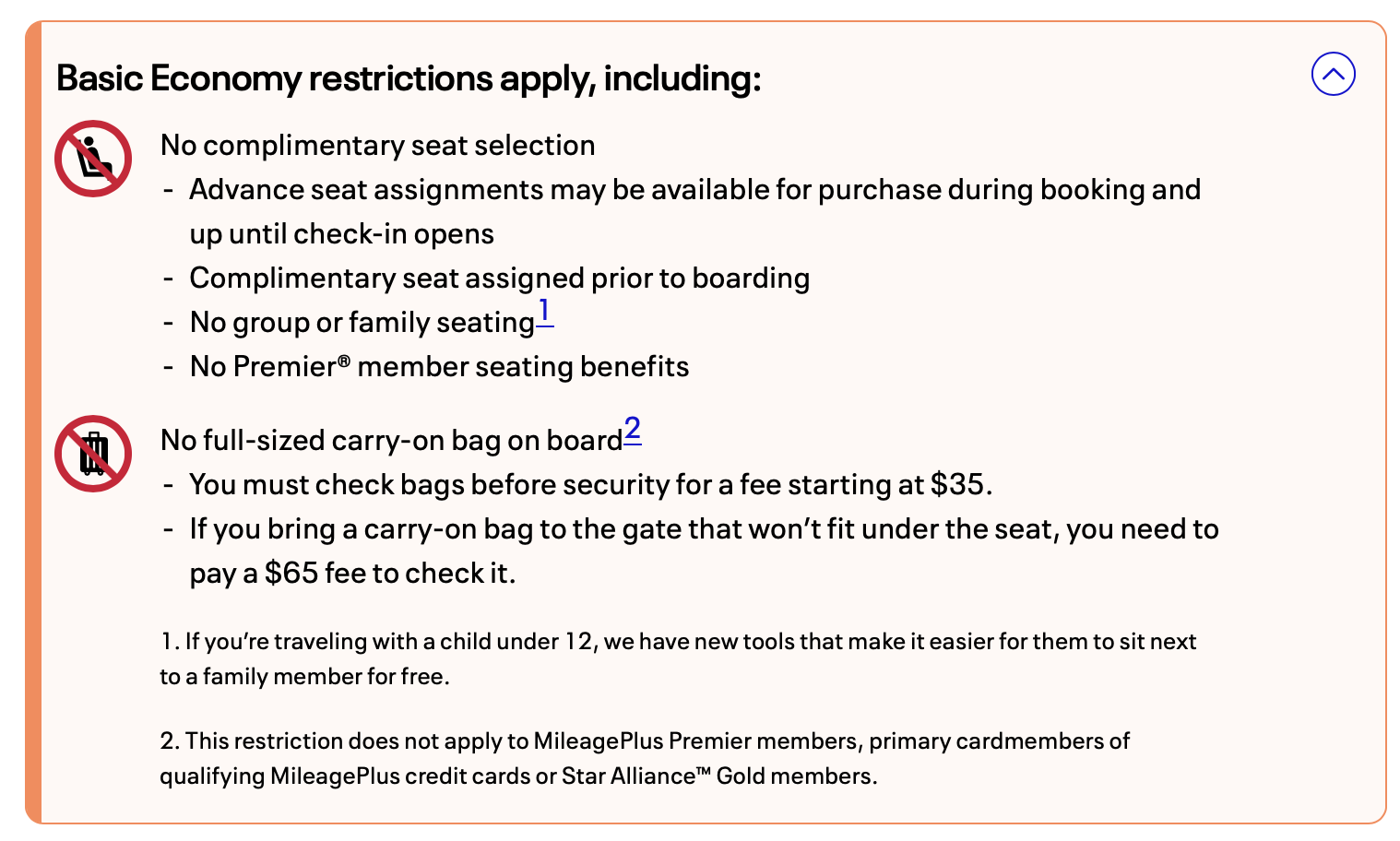
Airlines bombard you with intimidating red warning boxes that make their cheapest fares sound absolutely terrible. These fear-mongering messages list every possible restriction and inconvenience in alarming detail, using scary icons and negative language to make you think the basic fare will ruin your trip.
They highlight things like "no group seating" and "no carry-on bag" as if they're travel disasters, when many passengers would be perfectly fine with these limitations. The goal is to make you so anxious about the basic option that you'll gladly pay extra for a higher fare tier just to avoid the imagined hassles.
Forced Choice
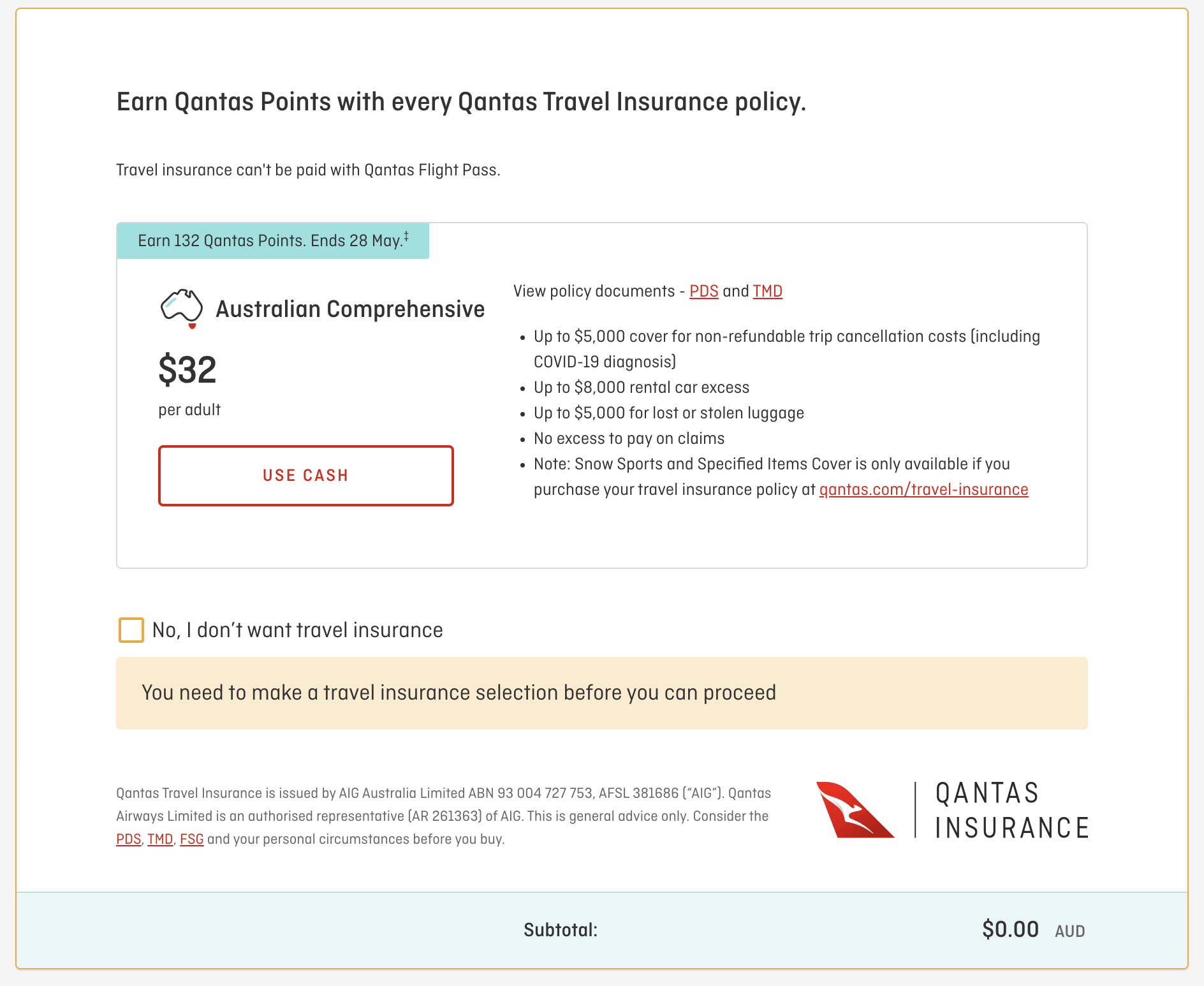
Airlines require you to explicitly accept or decline add-ons like travel insurance before you can continue with your booking. Instead of letting you simply skip these extras, they force you to engage with each upsell by making a deliberate choice.
This creates friction in the booking process and puts psychological pressure on you to consider purchases you never intended to make. Many travelers, especially when rushing through checkout, will simply click "yes" to these add-ons just to move forward rather than take the time to read through the details and actively decline.
Regional Dark Pattern Impact: Average Additional Costs
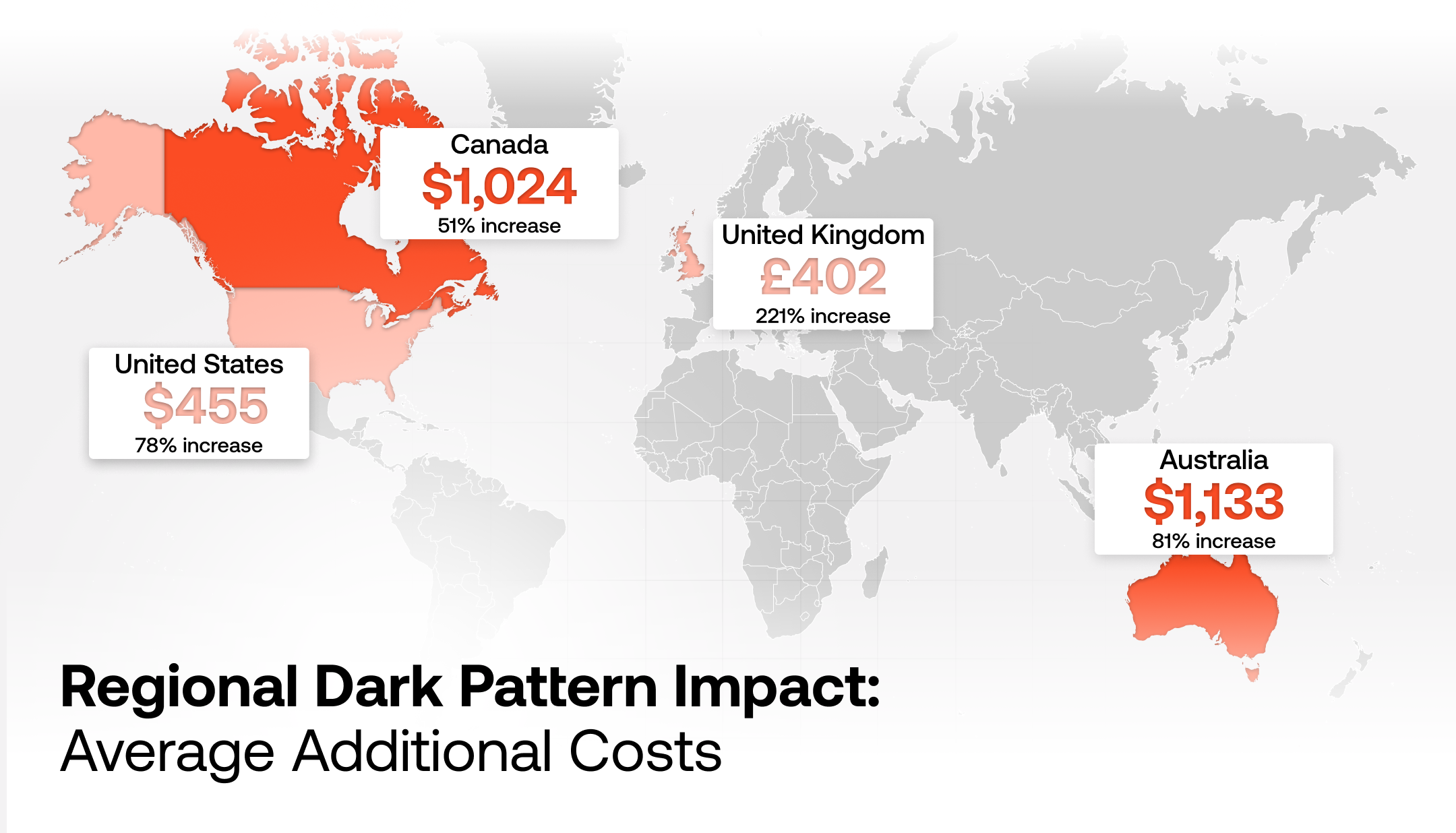
Our analysis of booking processes across major airlines and routes reveals significant regional variations in dark pattern manipulation costs:
- United States: Travelers pay an average of $455 extra (78% increase) due to dark patterns, with routes like Chicago-Miami seeing increases up to $1,000 on American Airlines
- United Kingdom: British travelers face £402 average additional costs (221% increase), with budget carriers like Ryanair and easyJet driving the highest percentage markups
- Canada: Canadian families encounter the steepest absolute costs at $1,024 average extra (51% increase), with WestJet showing particularly aggressive upselling on popular routes
- Australia: Australian travelers pay $1,133 average additional fees (81% increase), with Qantas and Jetstar employing extensive baggage and seat selection manipulation tactics
The data reveals that while percentage increases vary significantly by region, the absolute dollar impact is consistently substantial across all markets, with some individual bookings seeing price increases of over 200% from the advertised base fare.
How to Beat Airline Dark Patterns: 5 Essential Tips
Use Incognito Mode Browse in private/incognito mode to prevent airlines from tracking your search history and potentially raising prices based on your interest in specific routes.
Refresh Before You Commit Hit refresh on search results to clear fake scarcity badges and countdown timers. You'll often find the same availability and prices are still there despite the urgent warnings.
Use Meta-Search Engines Sites like Skyscanner, Kayak, and Google Flights show raw fares without the aggressive upsells and manipulation tactics you'll encounter on airline websites.
Check In as Late as Possible Budget airlines deliberately assign the worst seats to basic fare passengers, hoping you'll pay extra to change them. Wait until online check-in opens (usually 24 hours before) when better seats often become available for free.
Review Total Costs, Not Base Fares Always scroll down to see the final price including all fees before comparing options. Airlines hide true costs until the last step, so that attractive base fare might not be the best deal once everything is included.
Methodology
To analyze the impact of airline dark patterns on booking costs, we conducted a comprehensive study across four major regions - US, UK, Canada, and Australia. Our research methodology was designed to simulate real consumer booking experiences while controlling for external variables.
Data Collection Process: We used incognito browsing mode combined with VPN services set to local IP addresses for each target region (United States, United Kingdom, Canada, and Australia). This approach prevented airlines from tracking our search behavior or adjusting prices based on previous queries.
Route and Airline Selection: For each region, we analyzed the most popular domestic and international routes using the leading airlines by market share. This included major carriers such as American Airlines and Southwest (US), British Airways and Ryanair (UK), Air Canada and WestJet (Canada), and Qantas and Jetstar (Australia).
Price Comparison Framework: We recorded two distinct price points for each booking scenario:
- Base fare: The advertised price for a standard economy ticket with no additional services
- Dark pattern-influenced price: The final cost when accepting all suggested add-ons, upgrades, and services presented through manipulative design tactics
Quality Controls: Browser cache and cookies were cleared between each search to ensure consistent baseline conditions. All searches were conducted within a 48-hour window to minimize price fluctuations due to demand changes or airline pricing algorithms.
Conclusion
Airlines have turned flight booking into a psychological manipulation game, causing families to pay 108% more than advertised fares through carefully designed dark patterns. From fake scarcity warnings to aggressive upselling tactics, these practices exploit human psychology to rush purchasing decisions and inflate costs.
The good news? Awareness is your best defense. By recognizing these manipulation tactics and using simple countermeasures like incognito browsing and meta-search engines, travelers can avoid these traps and save hundreds of dollars on family bookings.


